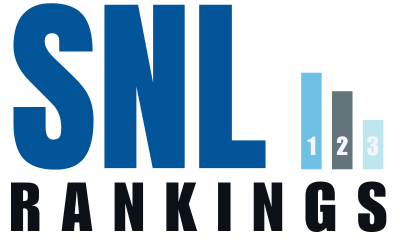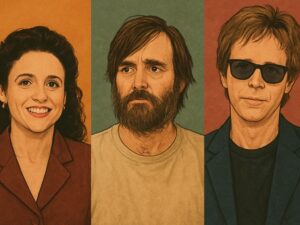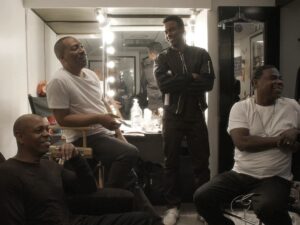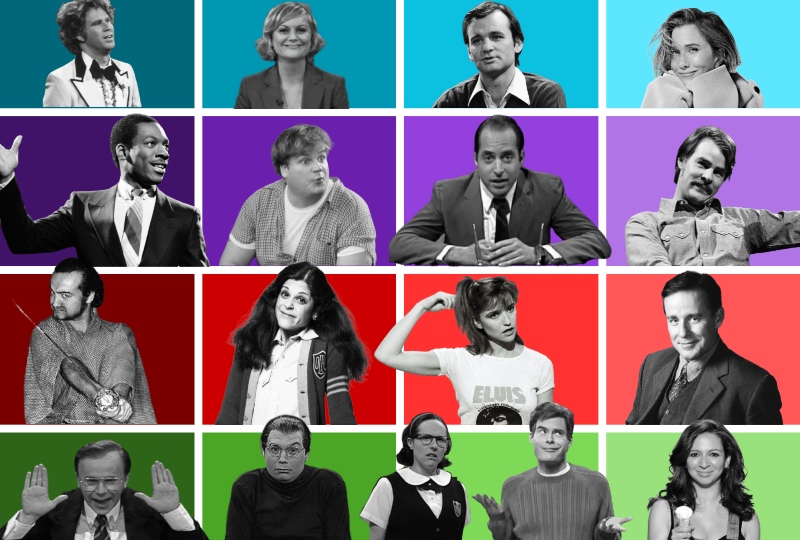Saturday Night Live is an American institution. When it debuted in 1975 it was a throwback to an earlier era in sense of production: a live stage show emanating from New York City.
But from a comedic sensibility, SNL was unlike any show anyone had ever seen. That’s because for the first time, the “hippies were in charge.” Executive producer Lorne Michaels, with his cadre of young comedians, brought a revolutionary form of entertainment to television.
Within days, and certainly within a few weeks, “Saturday Night” as it was referred to in the early days, was on the lips of many Americans as it took center stage in pop culture. Stars were born, characters were being mimicked across the country, and celebrities desperately wanted to make an appearance on teh NBC hit.
But, the 50-plus years of SNL have not all been success and fanfare. At times it’s appeared that the show would be cancelled, another casualty of the cutthroat entertainment industry.
But somehow, against staggering odds, SNL has survived uninterrupted for more than five decades. Michaels has been there helming the ship for all but five of the 50 seasons through Season 50.
How did SNL get here? And how close has it come to being taken off the air?
The disastrous Doumanian era
It probably didn’t matter who succeeded the original cast, they were going to be unfairly measured against them.
In the summer of 1980, Lorne Michaels, after five triumphant seasons as the executive producer of SNL, waited nearly to the last minute to announce he was leaving. He would exit along with Gilda Radner, Laraine Newman, Jane Curtin, Bill Murray, and the iconic cast and writers that lifted the show to unbelievable heights.
The unenviable task of building the second era of SNL fell to Jean Doumanian, an associate producer under Michaels. She felt confident she could steer the show into new waters and still find success.
Doumanian’s tenure: the second era of SNL lasted only ten months.
The troubles started before airing of the first episode of Season 6. Some on the writing staff were already grumbling that Doumanian was in over head, the cast lacked talent, and SNL was doomed.
The show was dubbed “Saturday Night Live ’80. The cast included Denny Dillon, who had auditioned but failed to earn a place in the original cast five years earlier. Also on board was Joe Piscopo, a loud New Jersey comedian with an insufferable ego. Others included Charles Rocket, who took over the re-branded Weekend Update segment, Gilbert Gottfried, and Gail Matthius.
“I had to get an all-new cast and all-new writers in two-and-a-half months. When I took over the show, the first thing they did was cut my budget,” Doumainian said.
The scant preparation showed. The first episode was hosted by Elliott Gould, a Hollywood star who had successfully hosted several times in the Michaels’ era.
The show as dreadful, prompting a mutiny. Some of the writers drafted a petition to get Doumanian fired. Others simply barricaded themselves in their offices, smoked a lot of pot and did other drugs, and contributed little to nothing.
“You just knew that this was America’s favorite television show, and yet here we were, taking it right into the toilet,” Piscopo said.
This was the first time critics used the term “Saturday Night Dead” to pan the show.
Doumanian was fired in April. The show was placed in the hands of Dick Ebersol, a brilliant producer who was known for sports and live event programming, but had never done a comedy variety show. He asked NBC to take the show off the air in April so he could fix it.
After a spring and summer of SNL re-runs, the show came back under Ebersole in the fall of 1981. His guidance, though rocky at times, proved to be just what the show needed. He was steadfast and immovable: nothing could stop Dick Ebersole from succeeding. He built a show largely around a 20-year old named Eddie Murphy, whom Doumanian had held at arm’s-length during her brief tenure.
In Season 7, Murphy and Piscopo returned, and most of the writers’ room was turned over. The show plodded through a mediocre season. But under the firm control of Ebersole, who never met an idea he wouldn’t try, SNL survived. Within a year, the show had a bright young cast that included such future stars as Julia Louis-Dreyfus and Martin Short. SNL was brought back from the brink of disaster.
Season 11: Lorne’s unfunny return
After five years away from the show he co-created, Lorne Michaels decided that “yes, you can go home again.”
When Michaels returned to the producer’s chair for the eleventh season of Saturday Night Live in 1985, it was seen as a homecoming. The show’s creator, who had departed five years prior, was brought back by NBC to save the program from a creative and commercial tailspin. There was fear among NBC executives that the departure of superstar Eddie Murphy may doom the show.
The prevailing belief was that Michaels possessed a “golden touch,” an innate ability to capture the comedic zeitgeist. Season 11 would brutally dismantle that myth, proving to be one of the most disastrous periods in the show’s history and bringing it perilously close to cancellation.
Michaels’ first move was to clean house, dismissing the entire cast from the previous season. Instead of hiring hungry sketch comedians, he made the puzzling decision to cast established young movie stars and quirky personalities, including Robert Downey Jr., Anthony Michael Hall, Joan Cusack, and Randy Quaid. The logic seemed to be that star power could reignite the show’s buzz. The reality was a catastrophic failure of chemistry. These were talented actors, but they were not suited for the high-pressure, cutthroat, fast-paced environment of live sketch comedy. The on-air product was often awkward, stilted, and painfully unfunny. Sketches frequently fell flat, with the cast appearing disconnected from the material and each other.
The season was a parade of cringe-worthy moments and creative misfires. The writing felt uninspired, and the cast’s lack of sketch experience was glaringly obvious week after week. As ratings plummeted, so did advertising revenue. NBC, led by the notoriously discerning Brandon Tartikoff, was losing patience. The network saw a flagship program becoming a financial liability, and serious conversations about canceling the show for good were taking place. The grand return of the show’s visionary creator had resulted in a near-fatal disaster; the golden touch had produced lead.
Facing the axe, Michaels made a desperate plea to Tartikoff for one more chance to rebuild. He received it, but with the understanding that another failure would be the end. The subsequent overhaul was radical. Of the entire Season 11 cast, only one performer was deemed worthy of returning: the immensely talented Jon Lovitz, whose memorable characters the “Master Thespian” and the “Pathological Liar” were the season’s lone bright spots.
For Season 12, Michaels abandoned his movie star experiment and hired a murderers’ row of genuine sketch comedy talent: Dana Carvey, Phil Hartman, Jan Hooks, Nora Dunn, and Kevin Nealon. The impact was immediate and transformative. This new ensemble clicked instantly, ushering in the show’s second golden era.
Within a few short years, the addition of comedic genius Mike Myers cemented this legendary cast, and Saturday Night Live was not only saved but had become a cultural powerhouse once again, leaving the near-death experience of Season 11 as a cautionary tale.
1995: The Ultimatum
Some people thought they were funny. And they were for a while. But by the 1994-95 season, the 20th in the history of Saturday Night Live, the sophomoric humor of Chris Farley and Adam Sandler was wearing thin.
Combine the decaying of comedy standards with a lapse in leadership by Michaels, and by Season 20 of the show, SNL was in disarray. Eventually, a change had to happen: an ultimatum came from up high: Lorne needed to clean house or possibly face the loss of his role on the show.
The dismissal of Farley and Sandler from Saturday Night Live following the 20th season in 1995 was a seismic event, but it wasn’t a decision made by Michaels. Instead, the directive came from furious NBC executives, led by West Coast President Don Ohlmeyer, who were appalled by the show’s declining quality and juvenile tone. After years of a hands-off approach, Michaels had allowed his cast of “Bad Boys”—Sandler, Farley, David Spade, and Chris Rock—to effectively run the show, turning Studio 8H into a creative fraternity house.
The humor became increasingly reliant on loud, simplistic, and repetitive characters. While wildly popular with a young male demographic, this style alienated critics and, more importantly, the network. Internally, the atmosphere was reportedly toxic for many. Female writers and cast members, such as Janeane Garofalo and Sarah Silverman, later described a culture where they felt marginalized and verbally abused. Their more nuanced comedic ideas were often shouted down or ignored in favor of another sophomoric bit from the dominant male clique. The perception was that if a sketch didn’t involve Farley breaking a table or Sandler singing a goofy song, it had little chance of making it to air.
Faced with mounting pressure and the threat of cancellation, a massive overhaul was mandated. Ohlmeyer forced the firings of Sandler and Farley, the two biggest stars, as a clear signal that the frat-boy era was over. It was a brutal, public culling intended to reset the show’s creative direction and reassert network control over its most valuable late-night property.
Before Season 21, Michaels was uncharacteristically contrite. He made sure to communicate with NBC execs about his intentions for the new show. In Season 21, a new emerging cast member appeared who would pull the show back to big ratings, critical acclaim, and success.
That cast member was Will Ferrell. In season 21, almost immediately, Ferrell became a major contributor to the show. Also in S21, Molly Shannon became a repertory player and started to show the skills that would make her one of the greatest SNL cast members in history.
Buoyed by Ferrell, Shannon, Season 21 saw the second-largest increase in quality from one season to the next that SNL has ever had. Bumps and difficulties have occurred since, but the show has not come as close to being cancelled as it did in 1995.







2 thoughts on “Three times Saturday Night Live faced cancellation and survived”
“Dick Ebersol, a brilliant producer who was known for sports and live event programming, but had never done a comedy variety show”
Ebersol was part of the creation of Saturday Night Live (hence Cooper Hoffman playing him in the film “Saturday Night”). That’s why Al Franken could joke “I know Dick, and Dick doesn’t know dick about comedy”.
“Of the entire Season 11 cast, only one performer was deemed worthy of returning: the immensely talented Jon Lovitz”
No, Nora Dunn and Dennis Miller also returned (as did featured player A. Whitney Brown).
Ebersol still had never been an executive producer of a comedy show.